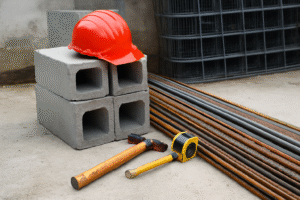Learn the essential steps and tools for construction project estimating. Understand labor, material, equipment costs, and how to optimize your estimating process with the latest technology. Start planning your project with accurate estimates today!
Construction Project Estimating: A Comprehensive Guide
Introduction to Construction Project Estimating
Construction project estimating is a critical process in the construction industry that involves predicting the total cost of a project, including labor, materials, and overheads. Whether you’re a contractor, project manager, or business owner, accurate estimates are essential for budgeting, planning, and ensuring project profitability. In this guide, we will explore the importance of construction project estimating, key elements involved, and tips for optimizing the estimating process to ensure a smooth project execution.
Why Accurate Construction Project Estimating Matters
Accurate construction project estimating can make or break a project. An incorrect estimate can lead to cost overruns, delays, and dissatisfaction among clients. On the other hand, a well-constructed estimate helps ensure that all project stakeholders are aligned on expectations and that the project stays within budget. Here are some reasons why estimating is crucial:
- Cost Control: Proper estimation helps in setting a clear budget for the project and allows better control of expenses during the execution phase.
- Project Planning: Estimating ensures that all materials, labor, and equipment are accounted for, reducing the risk of delays.
- Profitability: Accurate estimates enable contractors to price projects correctly, ensuring that they achieve a desired profit margin.
- Risk Management: Estimating allows project managers to foresee potential risks such as labor shortages, price fluctuations, or material delays.

Key Elements of Construction Project Estimating
- Labor Costs
Labor is one of the largest expenses in any construction project. Estimating labor costs involves determining the number of workers needed, their hourly rates, and the time required to complete tasks. Factors such as skill level and location can impact labor costs. - Material Costs
Materials are the backbone of any construction project, and their costs can fluctuate. Proper estimating ensures that you account for every type of material needed, from concrete to insulation. It’s also essential to consider waste and potential delivery costs. - Equipment Costs
Equipment costs include both rental and ownership costs. Construction companies need to determine the type and quantity of equipment required for the project and calculate their costs, which can vary depending on usage duration and maintenance needs. - Overhead and Indirect Costs
Overhead costs, such as administrative expenses, insurance, and permits, must also be included in the estimate. These costs are often overlooked but are vital for a comprehensive project estimate. - Contingencies and Risk Factors
It’s important to factor in contingencies for unforeseen issues. Typically, a contingency is a percentage of the total project cost set aside to cover unexpected expenses.

Steps in Construction Project Estimating
- Gather Project Information:
Before creating an estimate, ensure you have a clear understanding of the project scope, including blueprints, project timelines, and client requirements. - Conduct Quantity Takeoff:
A quantity takeoff involves measuring the quantities of materials needed for the project. This is one of the most time-consuming parts of the estimating process but is crucial for accuracy. - Estimate Labor, Material, and Equipment Costs:
Use your quantity takeoff to estimate the amount of labor and materials required. Then, calculate the costs of each, including taxes, delivery charges, and overheads. - Apply Unit Rates:
Unit rates help in calculating the cost of each item based on its individual cost per unit. For example, you may have a rate for each cubic yard of concrete or per square foot of roofing. - Add Contingency Costs:
Add a contingency factor to cover any risks or unexpected changes in scope. This can range from 5% to 15% of the total estimate, depending on the project’s complexity. - Review and Finalize the Estimate:
Ensure all calculations are correct and review the estimate with your team before finalizing it. Any overlooked elements could lead to costly errors later on.

How to Optimize Your Construction Estimating Process with Technology
With advancements in technology, manual estimating processes are becoming outdated. Software solutions like Procore, Buildertrend, and Bluebeam are now available to streamline construction estimating. These tools help reduce human errors, improve accuracy, and save time. Some benefits include:
- Automation: Estimating software can automatically calculate costs based on input data, reducing the time spent on manual calculations.
- Integration: These tools can integrate with other project management software, offering a unified platform for managing estimates, budgets, and schedules.
- Collaboration: Teams can collaborate in real-time, ensuring that all stakeholders are on the same page and that the estimate remains accurate throughout the project lifecycle.
Conclusion
Construction project estimating is vital to the success of any construction project. By understanding the key elements, following a systematic approach, and utilizing modern technology, contractors can ensure accurate estimates that lead to successful project execution. Moreover, optimizing your website’s SEO through quality backlinks and strategic content is essential for gaining visibility in a competitive market.
Contact Information for Zion Estimating:
- Phone Number: 718-427-9941
- Email Address: [email protected]
- Website: https://zionestimating.com
